Multi-muse RP/story/art blog for original story 'Devil's Eye'. Companion blog to sins-of-the-sea and der-karibisch-heyder. Written by ImagenAshyun and CappnRob. Secondary blog to immy-occ and der-karibisch-heyder.
Don't wanna be here? Send us removal request.
Text
-Sailing for Adventure at the Big Blue Wet Thing Sea!-

OC Indie RP/Ask/Story/Art blog for original story 'Devil's Eye', created by ImagenAshyun (@immy-ooc) and CappnRob (@der-karibisch-heyder), est. 2001
Fandomless; Setting flexible; historical RP
Semiselective; mutuals not required
Contains sensitive topics, always tagged
Multimuse, divided by ship crews
[Rules], [Muses], [Mun (immy-ooc)], [Mun (der-karibisch-heyder)]
3 notes
·
View notes
Text
NORTH & EAST AFRICAN RESOURCES
The Anthropological Masterlist is HERE.
North Africa is an African region that spans the northern part of the continent. North Africa shares many cultural and linguistic similarities with the Middle East.
BERBER ─ “The Berber, or Amazigh, people are an African people. They are native to North Africa.” ─ Berber Encyclopedia (in French) ─ Amazigh Culture (in French) ─ Berber Dictionary (in French)
GUANCHE ─ “The Guanche people are an African people. They are native to the Canary Islands.” ─ Guanche Information ─ Guanche History
KUSHITE ─ “The Kingdom of Kush was a Northeast African civilization that lived from 1070 B.C.E. to 550 C.E. They lived in modern-day northern Sudan and southern Egypt.” ─ Kushite Information ─ Kerma History ─ Meroitic Language
KABYLE ─ “The Kabyle people are an African people. They are native to northern Algeria.” ─ Kabyle History (in French)
East Africa is an African region that spans the eastern part of the continent. East Africa shares many cultural and linguistic similarities with the Middle East.
BAGANDA ─ “The Baganda, or Ganda, people are an African people. They are native to Buganda in Uganda.” ─ Baganda Culture
BANYARWANDA ─ “The Banyarwanda, or Kingdom of Rwanda, were an African people that lived from the 15th century C.E. to the 20th century C.E. They lived in modern-day Rwanda.” ─ Rwanda in the 20th Century ─ Genocide in Rwanda
DINKA ─ “The Dinka people are an African people. They are native to South Sudan.” ─ Dinka Culture ─ Dinka Language ─ Dinka Language Grammar
ETHIOPIAN ─ “The Ethiopian people are an African people that share the Ethiopian culture. They are native to Ethiopia.” ─ Ethiopian History ─ Afar Language ─ Ethiopian Music
KIPSIGIS ─ “The Kipsigis, or Kipsigiis, people are an African people. They are native to Kenya.” ─ Kipsigis Recordings
LOZI ─ “The Lozi, or Barotse, people are an African people. They are native to Barotseland in western Zambia.” ─ Barotseland Information ─ Lozi Language
LUGBARA ─ “The Lugbara people are an African people. They are native to the West Nile region in Uganda.” ─ Lugbara Culture ─ Sacrifice in Lugbara Culture
MAASAI ─ “The Maasai people are an African people. They are native to Kenya and northern Tanzania.” ─ Maasai Information ─ Maasai Culture ─ Maasai Language
MAKUA ─ “The Makua, or Makhuwa, people are an African people. They are native to northern Mozambique.” ─ Makua Culture
SHONA ─ “The Shona people are an African people. They are native to Zimbabwe.” ─ Shona History ─ Shona Dictionary
SWAHILI ─ “The Swahili, or Waswahili, people are an African people. They are native to the Swahili coast.” ─ Swahili Information ─ Swahili Culture ─ Swahili Dictionaries
VENDA ─ “The Venda people are an African people. They are native to the South African and Zimbabwean border.” ─ Venda Culture ─ Venda Culture
86 notes
·
View notes
Text


//Can you guess Phoebus mentored Isaac for a time?
#they probably had their times going out just to check out cute girls#respectfully and politely of course#(no really Isaac is too sweet and innocent to even THINK of being inappropriate with a girl ASFOASIHLF)#[Guest: Phoebus Duchamp]#[Isaac Conrad]#sins of the sea
0 notes
Text
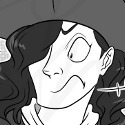
"...the boat has STAMINA?!"

"What kind of a boat has stamina?!"

"Especially one that requires furling up your sails to recover?"

"Nevermind apparently all you need to man it is to just have one person behind the helm and no one else."

"Splendid!! Hey, Devil Pirates!! Our boat doesn't need a whole crew to man it too!"
Oh, no. La Demonia Roja groans as one of her scuppers very slowly leaks water.

Giovanni sobs as he hugs one of the masts. "It's okay, Demonia!! You're still special to us!"
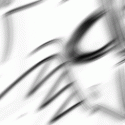
"You made our ship cry!! FIRE!!"
It only took one rinky dink canonball to sink the Hurley Crew's ship instantly.

"OH WHAT THE BLOODY HELL??!!"

"Just gather a couple trees and you can repair your boat."
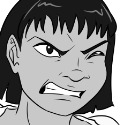
"But these trees are already harvested despite no one having come here!"

"That's a you problem, then."
#comic violence tw#guns tw#[Dumb]#skull and bones#[Dr. Tripoli]#[Hui Singlung]#[Captain Ravyn Hurley]#[Amir al-Basil]#[Guest: Giovanni Vespucci]#[Guest: Captain Josep Frascona]#[Guest: La Demonia Roja]#sins of the sea
7 notes
·
View notes
Text


Like gossipy geese-
#[Dumb]#[Guest: Alice Heyder]#der karibisch heyder#[Loraine Hawthorne]#tempted to add a third#being Deborah#maybe
1 note
·
View note
Text
Beauty and grace...
English add by me :)
224 notes
·
View notes
Text
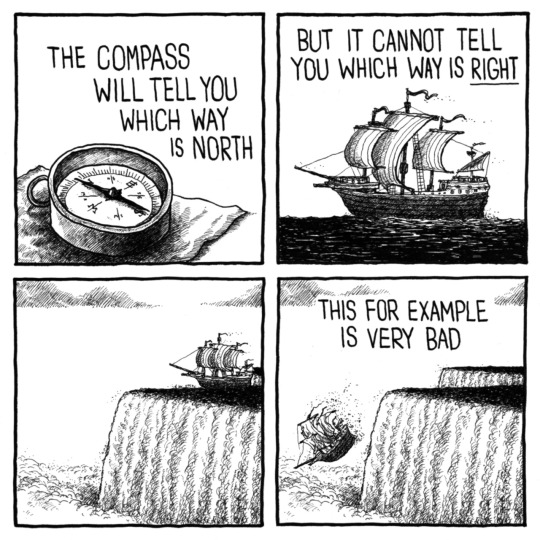
The compass will also not tell you to buy my book, but you should buy my book.
55K notes
·
View notes
Photo
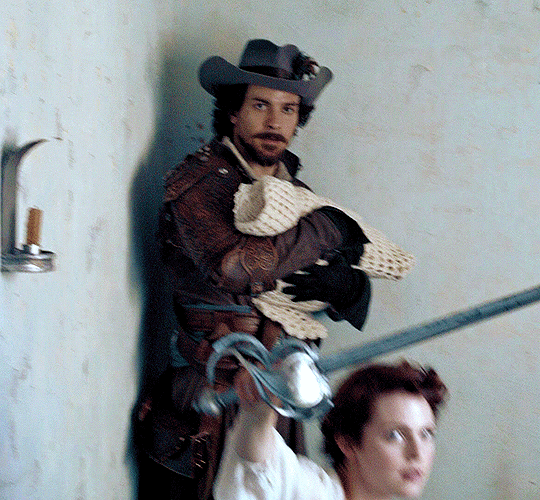
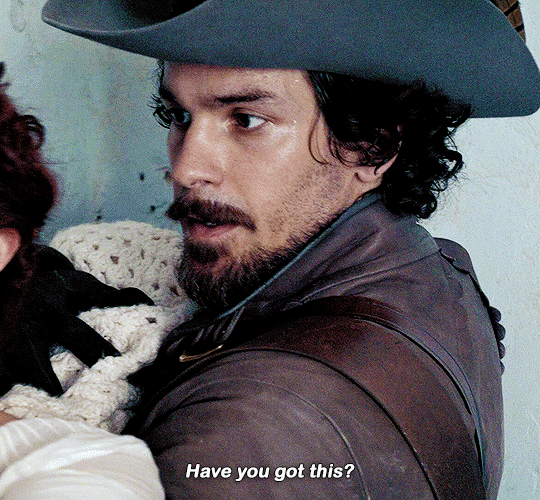
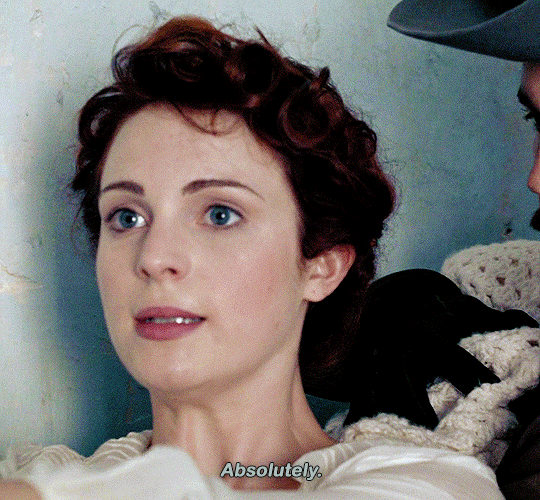

Aramis holding a baby while Constance fights a bad guy
THE MUSKETEERS 1.06 “The Exiles”
3K notes
·
View notes
Text
The perfect crime
356 notes
·
View notes
Photo

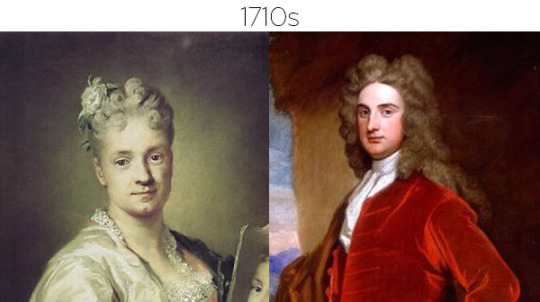

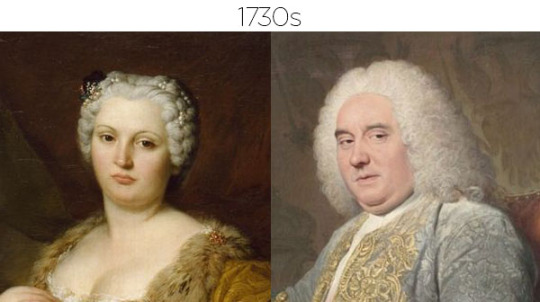
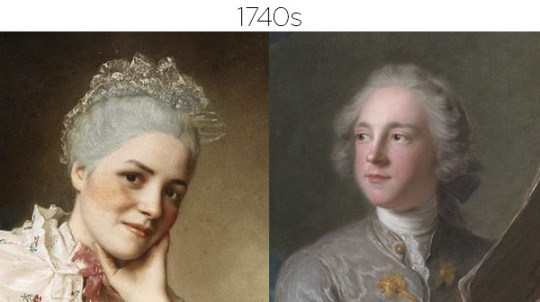
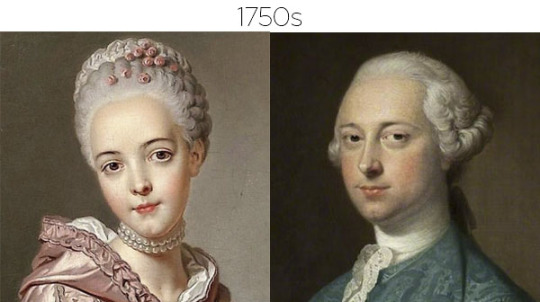
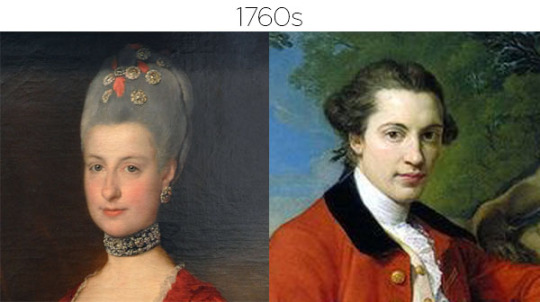
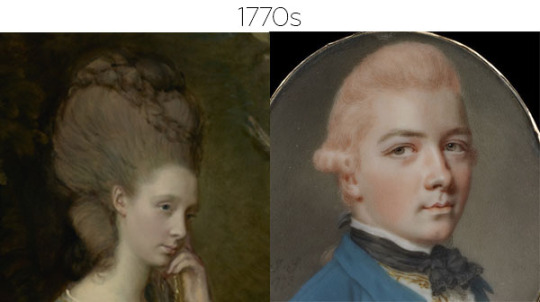

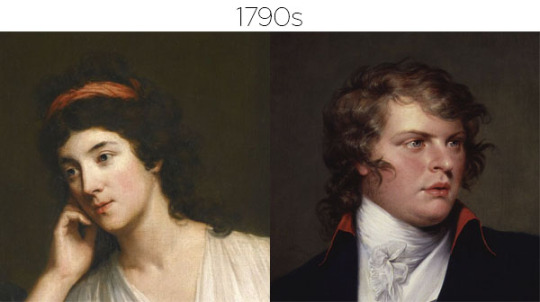
Hairstyles of the 18th Century
As requested, here’s a simple and quite basic timeline of hairstyle during the 18th century. It is mostly eurocentric, because most of fashion moved from Europe (especially France) to the rest of the world (even if a style was not originated there).
I thought to give you all a glimpse into the main changes of the century, of how hairstyling and wigs changed through the years, and how different the looks from the early century are from the ones of the late century: how we can see the change from the Baroque to the Regency era, and the rise and fall of the Rococo style.
So, in the images above, you can see a detail of a portrait of woman and a man from each decade of the century, starting in the 1700s and ending with the 1790s. Of course there are several examples for each decade, but I chose to use just two as a way of simplifying. But you can see the full paintings and more references in this Pinterest board I made.
I like to divide the century style in four parts just because that’s how I get it better: early, mid and late century, and the turn of the century. And of course each with its own cute little subtitle.
EARLY 18TH CENTURY a.k.a. fuck yeah the Baroque is still here (1700s-1730s)
WOMAN - For the late 17th century and early 18th century, the key hairstyle is the fontange, or top-knot in England, which is a hairstyle with the front hair piled up high, and in the late 17th century accompanied by a lace hairddress that could reach quite interesting heights. The hairstyles we see in the portraits above, are fontanges, but the frelange headdress got smaller and smaller until it disappeared.
The hair lost height until the 1720s, when low, simple hairdos took place, but the curls were not lost, they just turned into the tête de mouton.
MAN - the full bottomed wig is THE wig of the early 18th century, with its fluffy curls in natural colours or white, almost waist length and middle parted. This style was originated by Louis XIII in 1624, when he lost his hair it turned from the natural hair to wigs for everyone, since such volume is hard to achieve and keep. So, more is more. This style was worn pretty much until the 1730s.
During this time we see the emergence of the bag wig in the 1720s (the hair was tied at the back and then put in a small black bag, curls were made over the ears), and the bob wig (hair falling just below the ears, it had curls or a simple frizz all over) begins to be worn in the 30s
MID 18TH CENTURY a.k.a. never enough curls /1740s-1750s)
WOMEN - During this time, the hair was worn in soft waves with little or no height, and in the back it was arranged in small curls, a twist or a braid pinned to the head. But, if you could encapsulate THE hairstyle of the mid century, it would be the tête de mouton, with its close-fitted style of curls in neat rows, and the powdered with white powder (remember this look from Marie Antoinette?). This style was immortalised by Madame de Pompadour, and with her dead in 1764, this style went out of fashion for the sky-high styles of the rococo.
MAN - From the 40s-60s, the hair became bigger, the Ramillies wig (tied the hair in a plait at the back) came into fashion (even though it existed before, and was prefered by military men) with its tie in the back and the curls over the ears, which became THE mens hairstyle for the 18th century, or at least the one we all easily recognise.
LATE 18TH CENTURY a.k.a. we do not know the limits of things anymore (1760s-1780s)
WOMEN - During the 1760s, the high styles began to appear, being about ¼ or ½ the length of the face. It was styled in an egg shape and was pretty much simple with the styling with a few decorations. But oh, the 1770s came, and HUGE hair became all the rage, going to 1 ½ times the length of the face, styled in the shape of an air balloon. To achieve the height cushions or toques were used: attached to the top of the head, then the hair (natural or false) was curled, waved, or frizzed, and piled over the cushion, the back of the hair was set in curls and angled towards the back of the hair, and then decorated with all kinds of things. And I mean that, all kinds of things: from bows and ribbons to ships and bird cages. These styles were worn for days or weeks at a time, and were styled into allegories of current events (vaccinations? done! air balloon? done! zodiac? done!). This style was called pouf, pouffe, or toque.
In the 1780s the volume became horizontal, instead of vertical, and out very favourite hedgehog style, or coiffure à l’enfant, was born: a halo of of frizzy curls around the face, a small hank of longer hair left straight or in ringlets. The name coiffure à l’enfant was given by Marie Antoinette’s coiffeur Léonard Autie, when she gave birth to the dauphin and she lost a lot of hair and he made this hairstyle for her (which she wears in her portrait by Louis Elisabeth Vigée-LeBrun wearing a chemise à la reine). But, like a lot in fashion, the style can be seen a few years earlier, so it’s likely that that was just the same that stuck. Even though the style of the 1780s was supposed to be more natural, the hedgehog could be really REALLY big, and fake hair was used to achieve that volume.
MEN - Men’s hair went up as well, not as high as women’s BUT certainly higher. We see the volume of the pouffe in men’s hair at the top of the head, with pigeon wings (curls over the ears) and the rest of the hair tied in the back. This is the clear origin of the 1950s Pompadour hairstyle. Power was all the rage in many colours, and wigs were desirable in white or grey, but natural colours were accepted as well, just need to powder it.
TURN OF THE CENTURY (1790s-1800s) a.k.a. oh shit, that was too much! Let’s get minimal
WOMEN - After French Revolution powder went out of fashion in France, and in England it happened in 1795 when it was taxed even though it was already used less and less. This was the start of what we know as Regency fashion, which was an absolute contrast of the silhouettes worn in most of the century. Ad hair was not different.
The hedgehog was still worn, but the volume became more natural, and the hair was decorated simply with ribbons. Another style was the hair being worn in ringlets framing the face in a more restrained way, and a chignons in the back, showing off the neck. The hair could also be cut short, like very famously Lady Caroline Lamb did, ina a style called à la Titus, that became fashionable for men and women. Very Jane Austen-esque. The colours were natural with the powder gone, and this was the beginning of the Romantic period.
MEN - The powder was out of fashion, so no more white, grey or colourful hair for men. With the discovery of Pompeii’s ruins, we see a renaissance for classical and hellenic references during the 18th century, and we see that in women’s white fashions and curls, inspired in Greek and Roman sculptures, and in men we see short hair for the first time in a LONG time, inspired by ancient senators and gods. In 1795 with the powder tax, men potested cutting their hair (I mean, no hair, no need for powder), and we see the rise of the Bedford crop (a short cropped hairstyle with curls, parted to the side, styled with wax), started by the Duke of Bedford and then followed by his friends.
The layered short curly hairstyle called à la Titus, became famous while being worn by actor François-Joseph Talma as Titus Junius Brutus in Voltaire’s “Brutus”, shocking audiences with his short natural hair, also known as the Brutus hairstyle.
Formal court dress still required a powdered wig, as well as some professions and older and military men. But, by 1812 the age of the wig was gone.
_________________________________________________________________
FINAL NOTES: If you’re using this a guide for writing/art or a reference for how to style your hair, remember that these dates are not absolute, and that the beginnings and endings of the decades have a lot of mixing styles. So, for example, you can still have a hedgehog style in the 1790s, even though it was not THE hairstyle of the decades, and of course the portraits of the time clearly show this.
Images, from top:
Marie-Anne Mancini, duchesse de Bouillon (présumé) , ca. 1700, Nicolas de Largillière.
Sir John Chardin, ca. 1703, Unknown Artist.
Self-Portrait with sister, 1715, Rosalba Carriera.
Sir John Rushout, 4th Baronet, 1716, Sir Godfrey Kneller.
Madame Isaac de Thellusson, née Sarah le Boullenger, 1725, Nicolas de Largillière.
Portrait of Léopold Clément, Hereditary Prince of Lorraine, ca. 1720, Pierre Gobert.
Portrait of Giovanna Bagnara, 1739, Pierre Subleyras.
Portrait of Jean-Gabriel du Theil, 1738-1740, Jacques André Joseph Aved.
Mademoiselle Louise Jacquet”, 1748-1752, Jean-Étienne Liotard.
Francis Greville, Baron Brooke, later 1st Earl of Warwick, 1741, Jean-Marc Nattier.
Portrait of a Girl Holding a Spaniel, 1750s, by Alexander Roslin.
Sir Henry Oxenden, ca. 1755, Thomas Hudson.
Maria Christina, Duchess of Teschen, 1766, Marcello Bacciarelli.
Portrait of Edmund Rolfe, 1761, Pompeo Batoni.
Portrait of Anne, Countess of Chesterfield 1777 - 1778, Thomas Gainsborough.
A Young Man, presumed to be ‘John Bertram’, 1773, John Smart
A Lady, 1785, John Smart.
Jean-Joseph Mounier, 1789, Jean-François Favre.
Portrait of a Lady, 1790s, Hugh Douglas Hamilton.
Portrait of Prince Augustus Frederick, Duke of Sussex, 1798, Guy Head.
1K notes
·
View notes
Text

🧿 to keep you safe from people who want to do you harm.<3 🧿
42K notes
·
View notes
Text

was gonna design a fishmonger character but now they are absolutely a fishfag
47K notes
·
View notes
Text

Sneezes.
2 notes
·
View notes
Text
//Feels so weird that the Sin Crew was originally created to be counterparts to the Hero Crew, but with the Sins evolving and developing so much on their own, you'd think the other way around is true instead.
0 notes
Text
//Soul Calibur music, why are you so goooooooooood-
0 notes
Text


Top: Omar ibn Amir, 2015
Bottom: Omar ibn Amir, 2024
Changed which sides of his face has the asymmetrical traits because too many other characters in Devil's Eye have them on their left side. Also, he looks more like his mother this way.
I still haven't decided on a laqab, but maybe that can be part of Omar's story? I can justify his lack of one on virtue of being born perhaps somewhere in the Caribbean to a presumably English mother.
Presumably. We don't know where she's from.
4 notes
·
View notes
Text

"What do you think is the Devil's Eye?"
#[Open]#[Dr. Tripoli]#I don't have a muse page for him but fuckit#you don't need to know too much about him in order to interact#summary: he's an 18th century Tuareg doctor who took up Ottoman-sponsored medicine in the Ottoman Empire#but sometime departed from his caravan after losing one hand and one leg#I'll give his backstory another time
6 notes
·
View notes